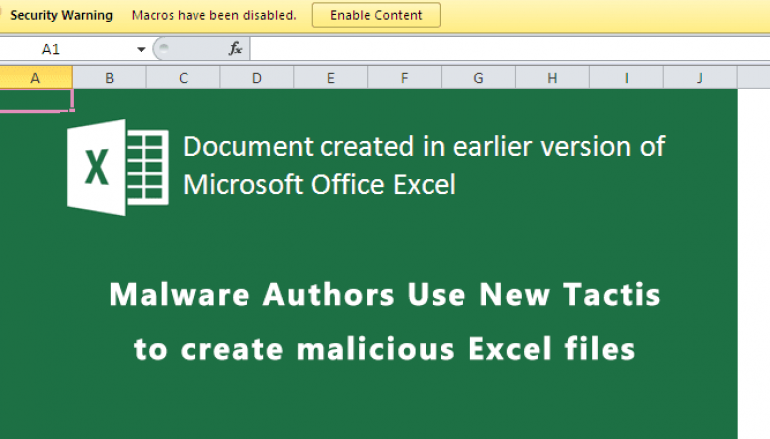
Malware Authors Create Malicious Excel Documents Using the .NET library to Bypass Security Checks
Malware authors use a new technique that lets them create macro-laden Excel workbooks without using Microsoft Office.
Security researchers from NVISO detected the malicious Excel documents that deliver malware through VBA-activated spreadsheets. The campaign appears to be run by a single threat actor, based on the limited number of samples available.
According to NVISO analysis, the malicious documents were found to be created using EPPlus software in the format Office Open XML (OOXML).
The OOXML is an Open Packaging Conventions (OPC) format that mainly contains XML files and some binary files.
“When a VBA project is created with EPPlus, it does not contain compiled VBA code. EPPlus has no methods to create compiled code: the algorithms to create compiled VBA code are proprietary to Microsoft,” reads NVISO blog post.
The first sample using this technique was observed on the 22nd of June 2020, and since then 200+ malicious documents were found over a period of 2 months.

All the malicious documents have the VBA project protected with a password and to open the VBA project only it requires the password. For malware execution no password is required, if user open’s the document password will get executed.

Once the user opens the malicious documents a second-stage payload gets download from various sites controlled by malware authors.
The second-stage payload acts as a dropper for the final payload, Antivirus engines detect the malware as “AgentTesla”.
Attackers use corporate email accounts to initiate the spam campaign, it was not know how they leveraged control over these accounts.
“Looking at both sender and recipient, there doesn’t appear to be a pattern we can deduce to identify potential new targets. There does not seem to be a specific sector targeted nor are the sending domains affiliated with each other.”
The following are the countries that are primarily targeted includes the United States, Czech Republic, France, Germany, as well as China.
NVISO believes that specific malicious Excel document creation technique is likely to be observed more in the wild.
This post Malware Authors Create Malicious Excel Documents Using the .NET library to Bypass Security Checks originally appeared on GB Hackers.






